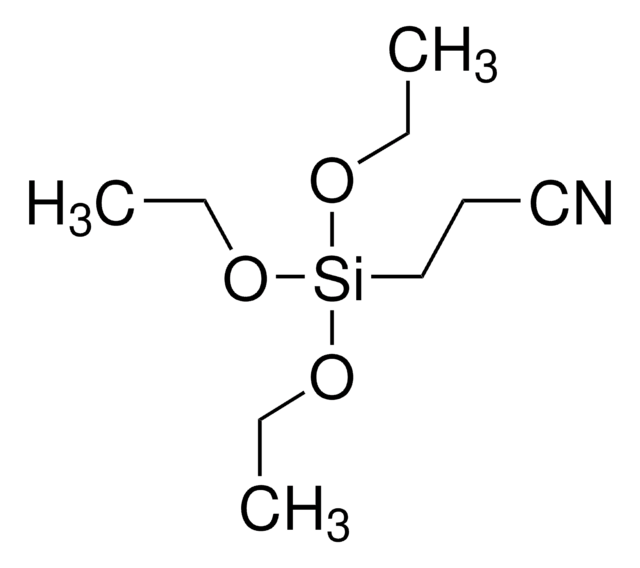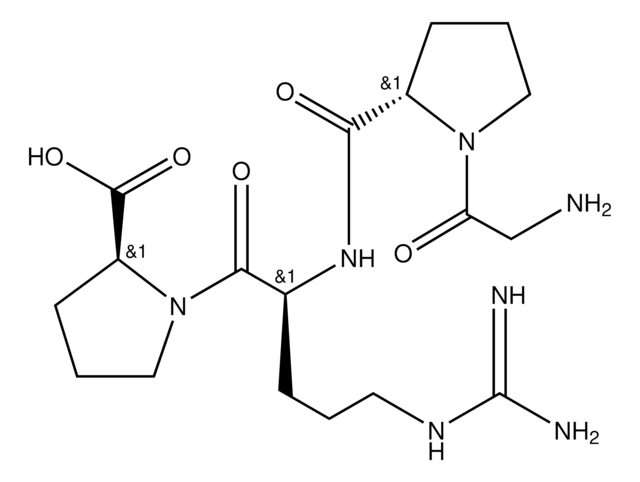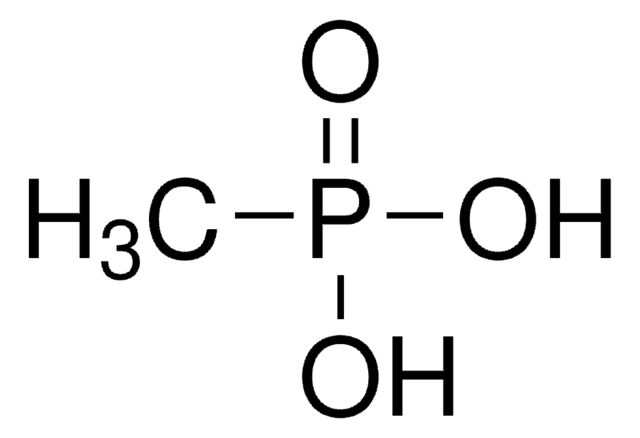435716
3-(Trihydroxysilyl)propyl methylphosphonate, monosodium salt solution
50 wt. % in H2O
Sinonimo/i:
Sodium 3-trihydroxysilylpropyl methylphosphonate
About This Item
Prodotti consigliati
Forma fisica
liquid
Concentrazione
50 wt. % in H2O
Impurezze
4 wt. % methyl alcohol
4 wt. % other silane-based salts
5 wt. % sodium methyl methylphosphonate
Densità
1.252 g/mL at 25 °C
Stringa SMILE
[Na+].CP([O-])(=O)OCCC[Si](O)(O)O
InChI
1S/C4H13O6PSi.Na/c1-11(5,6)10-3-2-4-12(7,8)9;/h7-9H,2-4H2,1H3,(H,5,6);/q;+1/p-1
MKAWPVONNWUREJ-UHFFFAOYSA-M
Applicazioni
- near-infrared dye-doped nanoparticles (NPs)
- as single silica source for the fabrication of phosphonate-rich organosilica layered hybrid material (PSLM)
- Gd/SiO2 nanoparticles
- mesoporous silica nanoparticles
- CdSe/ZnS/silica functionalized nanocrystals
Avvertenze
Warning
Indicazioni di pericolo
Consigli di prudenza
Classi di pericolo
STOT SE 2
Organi bersaglio
Eyes,Central nervous system
Codice della classe di stoccaggio
10 - Combustible liquids
Classe di pericolosità dell'acqua (WGK)
WGK 3
Punto d’infiammabilità (°F)
174.2 °F
Punto d’infiammabilità (°C)
79 °C
Scegli una delle versioni più recenti:
Possiedi già questo prodotto?
I documenti relativi ai prodotti acquistati recentemente sono disponibili nell’Archivio dei documenti.
I clienti hanno visto anche
Il team dei nostri ricercatori vanta grande esperienza in tutte le aree della ricerca quali Life Science, scienza dei materiali, sintesi chimica, cromatografia, discipline analitiche, ecc..
Contatta l'Assistenza Tecnica.













![3-[Bis(2-hydroxyethyl)amino]propyl-triethoxysilane solution technical, ~65% in ethanol](/deepweb/assets/sigmaaldrich/product/structures/346/789/6478c69e-26fa-46c4-919d-d90c61bc72ee/640/6478c69e-26fa-46c4-919d-d90c61bc72ee.png)
